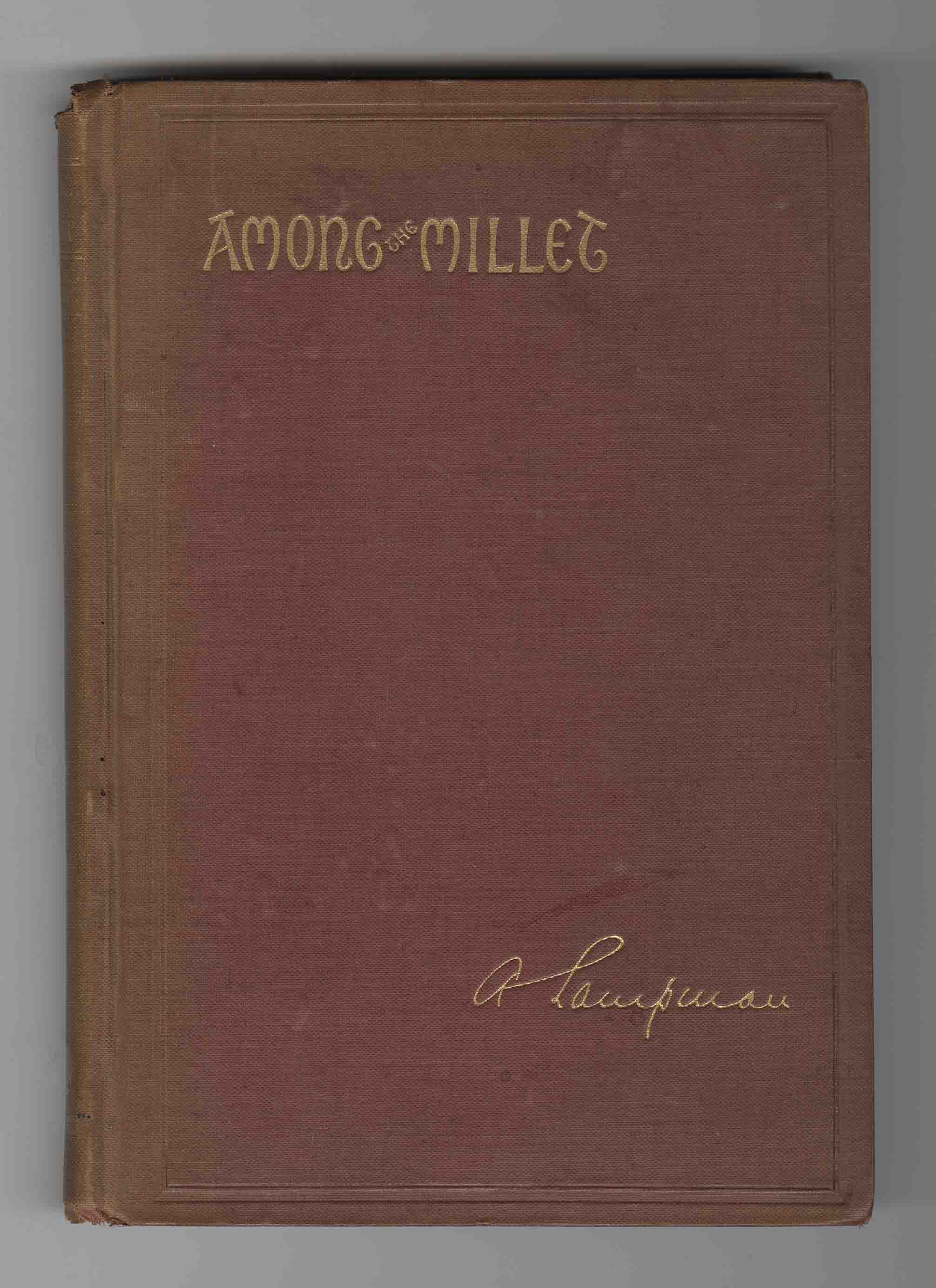Archibald Lampman
Ryan Porter, Queen's University
“We can have no literature of any consequence where there is no interested public, no publishing facilities, no journals or magazines, to whose pages it is a matter of profit and pride to win admission. But when these are found we shall have plenty of literature, I believe the best on the continent.” So wrote poet Archibald Lampman (1861-1899) in 1897 in “At the Mermaid Inn,” the literary column he co-wrote with fellow poets William Wilfred Campbell and Duncan Campbell Scott. Lampman acutely felt the dearth of publishing opportunities for the Canadian poet in  the 1890s, and his criticism no doubt emerged from personal experience. As a patriot, he spoke loudly for the creation of a Canadian periodical on par with those four or five “great magazines of the United States”; until then, the majority of publishing opportunities for Lampman and other Confederation poets were in the United States.
the 1890s, and his criticism no doubt emerged from personal experience. As a patriot, he spoke loudly for the creation of a Canadian periodical on par with those four or five “great magazines of the United States”; until then, the majority of publishing opportunities for Lampman and other Confederation poets were in the United States.
Harper’s, Scribner’s, Youth’s Companion, and the Atlantic Monthly published Lampman’s poems with some regularity, and provided a nice supplement to his modest postal-clerk wages. Seeking to consolidate his relative success in the periodical press, Lampman wanted to publish a collection of verse. Finding a publisher, however, proved a multi-year task fraught with false hope and repetitive disappointment. 
Lampman privately published his first volume, Among the Millet (1888) in Ottawa. It would be the only book-length publication to be published in Canada during his lifetime. Reviews were positive and launched Lampman into leading Canadian literary circles of the period. Duncan Campbell Scott, while praising the volume’s content, said of its publishing circumstances: “everything was done that could be accomplished with limited skill, experience and equipment to make the book a success.” Scott’s remarks may reveal why Lampman sought only American firms to publish his second volume. 
The second book appeared after a long eight-year gap. A letter to H.E. Scudder of the Atlantic Monthly, dated 4 December 1894, hints at Lampman’s increasing sense of dejection during this interim: “The prospect of publication which I had last spring and which I think I mentioned to you in a letter, is … vanishing into the very thin air, that absorbs all our hopes in that effect.” The “prospect” involved Bliss Carman who had secured Lampman’s publication with Stone and Kimball, the firm for which Carman served as literary advisor. The project hinged on Lampman recruiting a Canadian publisher for a Canadian edition. He was unable to do so, and the project’s termination contributed to Lampman’s sense of isolation in Ottawa, cut off from the larger world of literary activity and success. Perhaps  understandably, Lampman praised those writers who had left Canada and escaped the narrow opportunities in what he called “the thin sluggishness of a colonial atmosphere.” Lampman himself never made that move, despite several promising offers.
understandably, Lampman praised those writers who had left Canada and escaped the narrow opportunities in what he called “the thin sluggishness of a colonial atmosphere.” Lampman himself never made that move, despite several promising offers.
In 1896, Copeland and Day of Boston published Lampman’s Lyrics of the Earth. Sales were disappointing, and future prospects with this firm dissolved. He once more turned to private publication, this time with a firm in Edinburgh. His death on 10 February 1899 occurred while the manuscript for Alcyone was in process. As Lampman’s literary executor, Scott immediately halted publication, but had a dozen memorial  copies produced by Ottawa publisher James Ogilvy. One year later, The Poems of Archibald Lampman, a volume containing all three previous collections and many previously unpublished poems, was issued by George N. Morang & Co. of Toronto. Scott evidently trusted the skill of this Canadian firm since proceeds from the volume funded an annuity for Lampman’s widow and two small children. This collection sold well and was reprinted a number of times. Lampman, however late, had finally found an interested Canadian press, not to mention his “interested public.”
copies produced by Ottawa publisher James Ogilvy. One year later, The Poems of Archibald Lampman, a volume containing all three previous collections and many previously unpublished poems, was issued by George N. Morang & Co. of Toronto. Scott evidently trusted the skill of this Canadian firm since proceeds from the volume funded an annuity for Lampman’s widow and two small children. This collection sold well and was reprinted a number of times. Lampman, however late, had finally found an interested Canadian press, not to mention his “interested public.”
Addresses Delivered at the Dedication of the Archibald Lampman Memorial Cairn. London: Western Ontario Branch of the Canadian Authors Association, 1930.
Bourinot, Arthur S. Five Canadian Poets. Ottawa: [n.p.], 1954.
— ed. Some Letters of Duncan Campbell Scott, Archibald Lampman and Others. Montreal: Quality Press, 1959.
Connor, Carl Y. Archibald Lampman: Canadian Poet of Nature. 2nd ed. Ottawa: Borealis Press, 1977.
Early, L.R. Archibald Lampman. Boston: Twayne Publishers, 1986.
Lampman, Archibald. “At the Mermaid Inn.” The Globe [Toronto] 28 May 1892. http://www.canadianpoetry.ca/confederation/mermaid_inn/may_28_1892.htm
(accessed 3 March 2009)
—. “At the Mermaid Inn.” The Globe [Toronto] 4 March 1893.
http://www.canadianpoetry.ca/confederation/mermaid_inn/mar_4_1893.htm
(accessed 3 March 2009)
McMullen, Lorraine, ed. The Lampman Symposium. Ottawa: University of Ottawa Press, 1976.
Scott, Duncan Campbell, ed. The Poems of Archibald Lampman. Toronto: George N. Morang & Co., 1900.
Whitridge, Margaret Coulby, ed. Lampman’s Kate, Late Love Poems of Archibald Lampman 1887-1897. Ottawa: Borealis Press, 1975.
Bliss Carman fonds, Queen’s University Archives
Lorne and Edith Pierce collection, Queen’s University Archives






![Sinking of the Lusitania [advertising supplement], May 1915](/sites/default/files/styles/thumbnail/public/canpub/CP000006_0.jpg?itok=YHDP9Cay)
![Sinking of the Lusitania [advertising supplement], May 1915](/sites/default/files/styles/thumbnail/public/canpub/CP000006-2_0.jpg?itok=zo9sU_6U)
![The World's Greatest War [advertising supplement], 15 May 1915](/sites/default/files/styles/thumbnail/public/canpub/CP000004_0.jpg?itok=JYzzGX-h)
![The World's Greatest War [advertising supplement], 15 May 1915](/sites/default/files/styles/thumbnail/public/canpub/CP000004-2_0.jpg?itok=9kcwBBj5)





